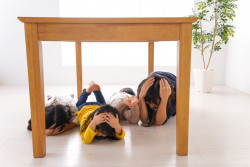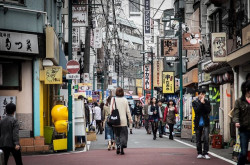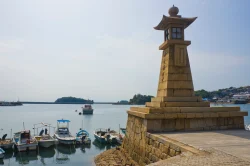
Originally published on metropolis.co.jp on November 2012

Two giants of Japanese postwar dance come together on stage for the first time. Both born in 1943, Akaji Maro and Akira Kasai also both emerged out of the creative ferment of the 1960s butoh dance scene.
Maro formed his Dairakudakan (“Camel Battleship”) company four decades ago after apprenticing with Tatsumi Hijikata, founder of the avant-garde dance style butoh that came to be called “dance of darkness.” Known to the wider world as “Boss Ozawa” from Quentin Tarentino’s Kill Bill, Maro’s productions continue to uphold the ghostly butoh esthetic that sees dancers—bald and daubed head to toe in white paint—enact tortured, slow-motion scenarios whose themes often center on life, death and creation.
Kasai was also deeply influenced by Hijikata’s radical, deliberately graceless and earthbound concept of dance, but took his own vision of butoh in a different direction with his Tenshikan (“Angel Museum”) company. With a background in classical ballet and modern dance and a lifetime of studies in everything from hip-hop dance to eurhythmy, Kasai’s works vary greatly from production to production.
With members of their respective companies providing support in this historic production, Kasai and Maro will offer their own twist on Japan’s foundation myth. In order to get grumpy sun goddess Amaterasu out of her heavenly cave to begin creating the world, the other gods “throw a party.”







